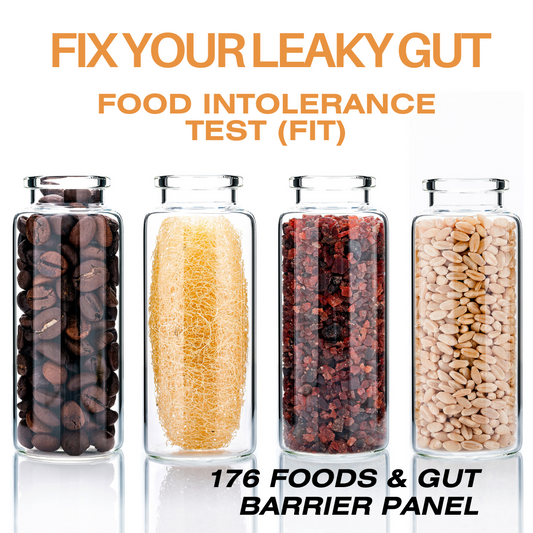
DEXA SCAN For Bone Density
Learn below why a True Bone Density DEXA Scan (Hip & Spine Positioning) is essential for Bone Health and Osteoporosis Prevention
Bone Health & Osteoporosis Prevention: Why a DEXA Scan is Essential
Understanding Bone Health & The Importance of Early Detection
Bone health is a critical aspect of overall well-being, yet osteoporosis and osteopenia often go unnoticed until a fracture occurs. Osteoporosis, a condition that weakens bones and makes them more susceptible to breaks, affects over 10 million Americans, while an estimated 44 million have low bone density (osteopenia), putting them at risk.
A DEXA scan (Dual-Energy X-ray Absorptiometry) is the gold standard for measuring bone density, detecting bone loss early, and preventing fractures before they happen. If you're concerned about your bone health, getting a DEXA scan is the most effective way to assess your risk and take action.

Key Facts About Osteoporosis & Bone Health
📌 Osteoporosis is a silent disease. It develops without symptoms, and most people don’t realize they have it until they experience a fracture.
📌 1 in 2 women and 1 in 4 men over 50 will suffer from an osteoporosis-related fracture in their lifetime.
📌 Osteopenia is the early stage of bone loss and can progress to osteoporosis if not addressed.
📌 Fractures due to osteoporosis occur every 3 seconds worldwide.
📌 The hip, spine, and wrist are the most common sites for osteoporosis-related fractures.
📌 Bone loss can begin as early as your 30s, and without intervention, it accelerates with age.
📌 DEXA scans are the only reliable way to measure bone density and detect osteoporosis before a fracture occurs.
Why You Should Get a DEXA Scan for Bone Health
A DEXA scan is a quick, painless, and highly accurate imaging test that provides a detailed analysis of your bone mineral density (BMD). The results help determine if you have normal bone density, osteopenia (low bone mass), or osteoporosis (severe bone loss).
Who Should Get a DEXA Scan?
✔️ Women in their 20’s to ESTABLISH THEIR BASELINE of BONE HEALTH
✔️ Women over 50 and postmenopausal women ✔️ Men over 60 with risk factors for osteoporosis ✔️ Anyone with a family history of osteoporosis or fractures ✔️ Individuals with low body weight or a history of eating disorders ✔️ People taking long-term corticosteroids (like prednisone) ✔️ Individuals with medical conditions affecting bone health (such as rheumatoid arthritis, diabetes, or thyroid disorders) ✔️ Athletes, bodybuilders, and fitness enthusiasts tracking bone strength

How a DEXA Scan Can Help Prevent Osteoporosis & Fractures
✅ Early Detection – A DEXA scan identifies bone loss before it leads to fractures.
✅ Personalized Prevention – Based on your results, you can take steps like nutrition, weight-bearing exercises, and medication to strengthen bones.
✅ Fracture Risk Assessment – Your scan results help determine if you’re at high risk for fractures, allowing for proactive treatment.
✅ Monitor Bone Health Over Time – If you’ve already been diagnosed with osteopenia or osteoporosis, a DEXA scan helps track progress and measure the effectiveness of your treatment plan.
Take Charge of Your Bone Health – Book a DEXA Scan Today
Don’t wait for a fracture to find out you have osteoporosis. A simple DEXA scan could help prevent bone loss, improve your quality of life, and keep you strong for years to come.
📅 Find a DEXA Scan Provider Near You – Locations page
Your bones support you every day—give them the care they deserve!
Blog posts
View all-

Start Your Morning Right: 5 Daily Habits to Boo...
Your morning routine sets the tone for your entire day, and when it comes to improving your body composition (the ratio of fat, muscle, and bone in your body), those first...
Start Your Morning Right: 5 Daily Habits to Boo...
Your morning routine sets the tone for your entire day, and when it comes to improving your body composition (the ratio of fat, muscle, and bone in your body), those first...
-

Stronger Bones, Stronger Future: Understanding ...
Every October, we recognize Bone Health Month—a reminder to take care of the framework that keeps us standing tall: our bones. While often overlooked, bone health is central to overall...
Stronger Bones, Stronger Future: Understanding ...
Every October, we recognize Bone Health Month—a reminder to take care of the framework that keeps us standing tall: our bones. While often overlooked, bone health is central to overall...
-

DEXA vs. InBody: Which is better for body compo...
When we attend community events to promote the benefits of DEXA scans for body composition and bone health, we often hear two common responses: “I’ve never heard of a DEXA...
DEXA vs. InBody: Which is better for body compo...
When we attend community events to promote the benefits of DEXA scans for body composition and bone health, we often hear two common responses: “I’ve never heard of a DEXA...
Shop DEXA Products
-
Health & Hormone Optimization Blood Test
Regular price $650.00 USDRegular priceUnit price / per -
Health Optimization Food Intolerance and Gut Health Test
Regular price $495.00 USDRegular priceUnit price / per -
Free 30 Day Nutrition Coaching Meal Plan and Fitness Strategy
Regular price $0.00 USDRegular priceUnit price / per








